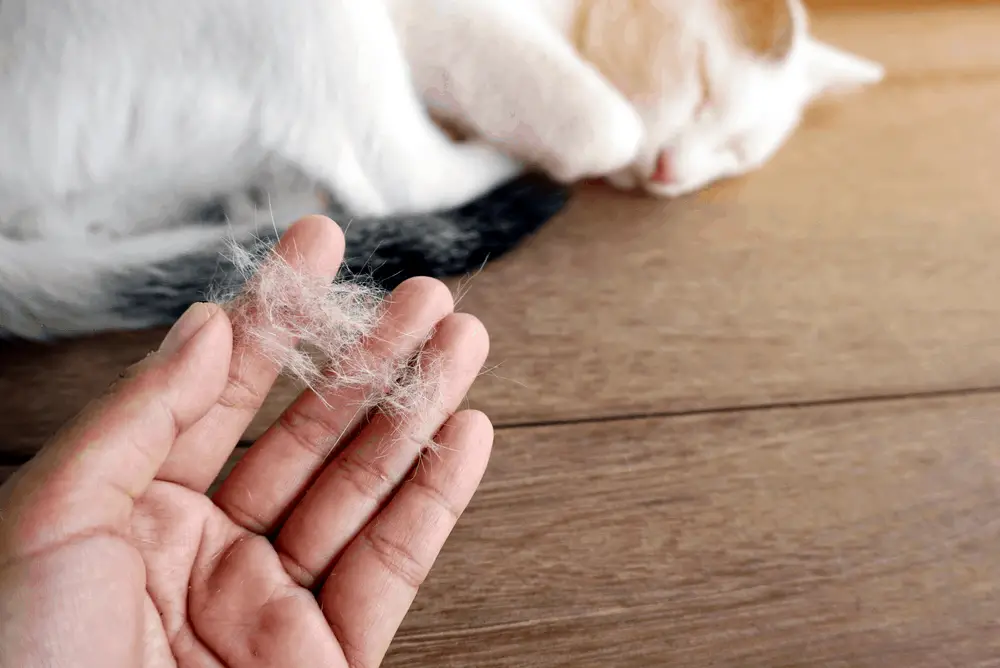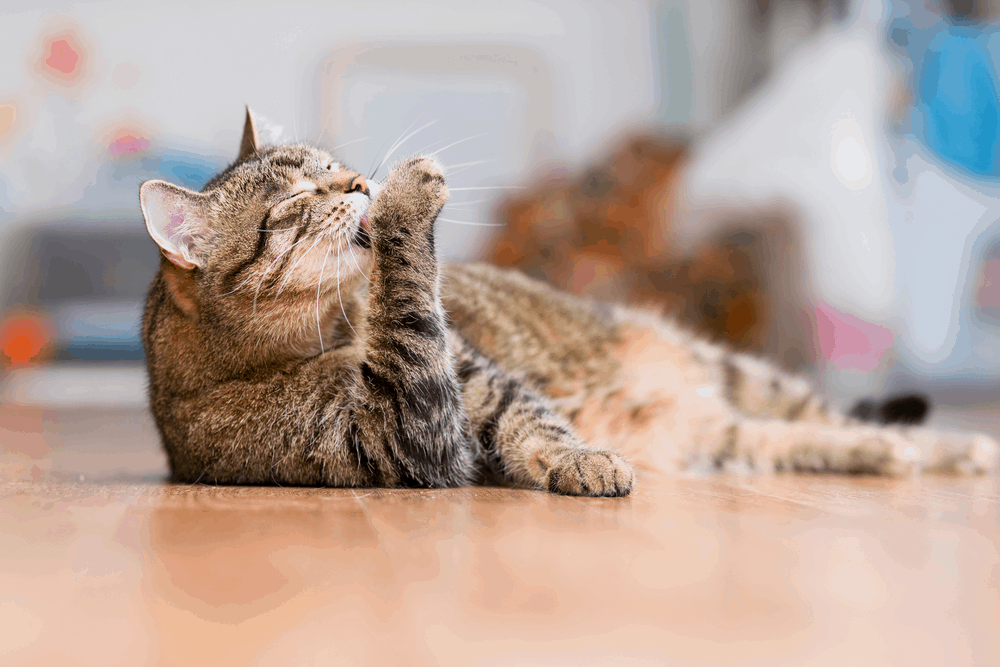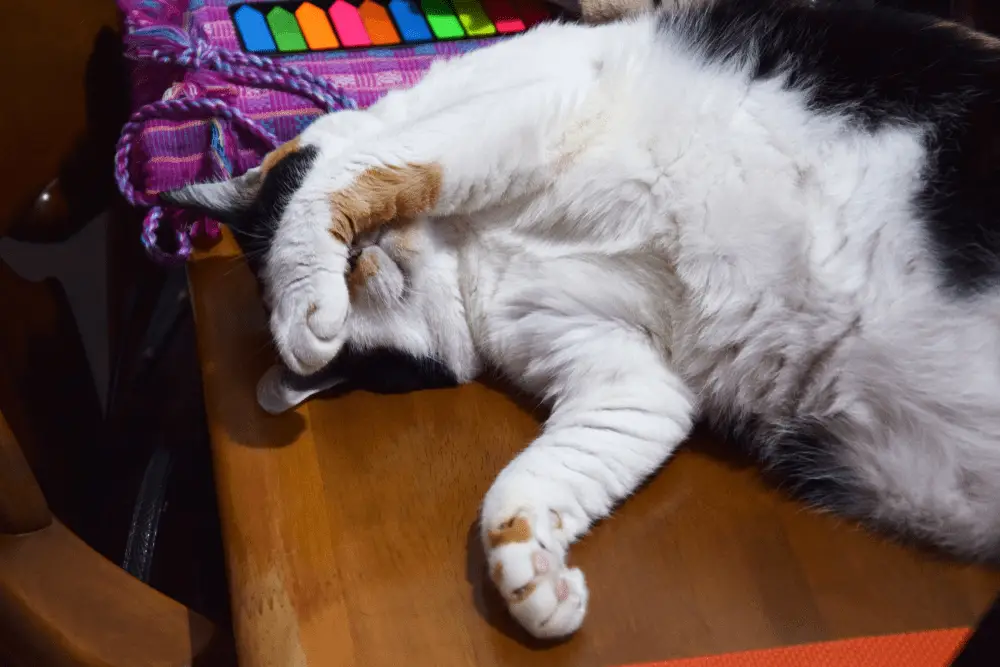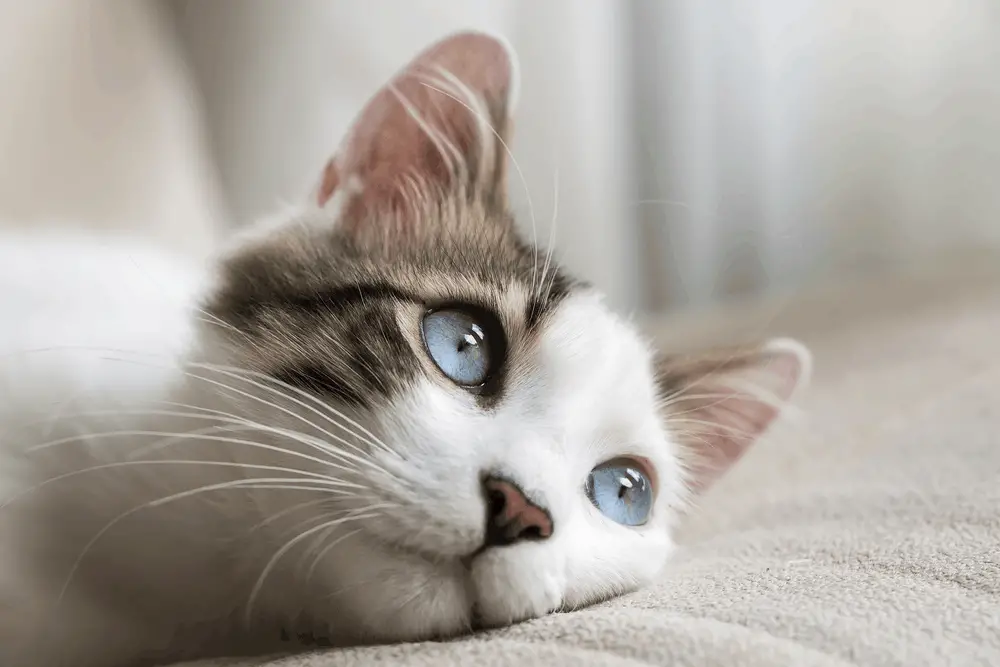Do you believe that your cat has eczema? Many people do not fully understand how close cats resemble humans. They have many similarities. One of those similarities is the fact that they can be impacted by the same diseases like you. This is something you’ll need to take into consideration when you become a cat owner. There’s always a risk that your furry friend will develop eczema. If he or she does, you’ll need to remedy this problem quickly.
So, how can you know if your cat has eczema? The most obvious symptoms include scratching and rubbing of the impacted areas. You’ll also be able to diagnose the problem by taking a closer look at the cat’s skin. Is it inflamed and red? If so, there is a good chance that you’re dealing with eczema.
However, you should know that this may be the result of other problems as well. It can be difficult for ordinary people to differentiate between eczema and other skin conditions. Therefore, it’s best to analyze the situation, check the cat’s skin, and take your feline to the vet. Within this article, you will learn more about the signs of cat eczema.
#1 Excessive Scratching

First and foremost, you should keep a close eye on your kitty. You likely spend a lot of time with him or her and that is a good thing. Well, you need to watch them a little closer. By monitoring their behavior, you’ll be able to find out whether they’re suffering from eczema problems or not. One thing to look out for is excessive scratching. It is common for cats to scratch. However, they should not sit around and scratch for hours on ends.
This is a big problem and it should confirm that something is wrong. Remember that feline eczema is often referred to as scabby cat disease. The medical name is feline miliary dermatitis. If your cat possesses the signs of eczema, you should visit a veterinarian and ask them about it. They’ll be able to diagnose the problem and they can help you find a solution to the problem.
If you’re able to put a stop to the itching, you will also put a stop to your cat’s never-ending scratching. That will make your life and your cat’s so much better.
#2 Small Red Bumps
Do you suspect that your cat has eczema? Have you noticed that he or she has been scratching too much lately? This is the first sign that you have a problem. Next, you should take things one step further. You should invite your cat over and offer to give them a rub on the belly. This will give you the chance to sneak in for a closer look. What you’re looking for are visible rashes on your cats’ skin.
With that being said, you should check out your cats’ belly thoroughly. Do you notice any red bumps? Are they spread all around the cat’s stomach? If you’ve answered yes to these questions, your cat most likely has eczema. However, you should know that eczema looks similar to several other skin conditions. Therefore, you need to make sure that you get your cat help as soon as possible. A trip to the vet is in your future.
#3 Scales On The Skin
Now that you’ve confirmed signs one and two are present, you should look for scales. Eczema causes the skin to dry out excessively and this will lead to the development of scales. This is a sure sign that your fur baby is having problems. Since scales are present, you can almost guarantee that the problem is eczema. You’ll notice the small red bumps first. On top of these bumps, you should be able to spot small scales. It’ll look like the cat has a severe case of dry skin.
Besides planning a trip to the vet, you should think about applying moisturizer to your cat’s skin. If your cat won’t stop scratching, you should use Benadryl cream. This will provide them with a little relief, and it’ll ensure that the itching stops. You can use the same solution on your own skin. Either way, you cannot let your cat suffer. Getting professional help as soon as possible is recommended.
#4 Raw Patches
Eczema is a problem that is going to worsen very quickly. This is indeed the case with felines. After all, these animals are going to dig at their skin until no end. With a child, you might be able to stop them. You can tell them about the importance of not scratching. Your cat isn’t going to listen. With this in mind, there is a good chance that your cat will scratch to the point that it leads to raw patches of skin. Cat eczema generally develops on the stomach and hind legs.
Therefore, you’ll want to look in these areas first. If you notice raw patches of skin, your cat has been scratching too much. It’s time to visit your vet and get him or her some help!
#5 Hair Loss
Unfortunately, cats can lose their hair at some point. There is always a chance that you’re dealing with Alopecia. Humans and cats can suffer from this problem. However, there is a risk that the problem is something else entirely. On the flip side, it may very well be eczema. If your cat is allowed to scratch and lick too much, it’s going to lead to more problems. One of the most notable is the fact that it is going to result in hair loss. Again, this will mostly occur on the cat’s belly.

Cats should have fur on their belly. If they do not and you notice red patches too, you’re likely dealing with an eczema problem. If you’re able to remedy this problem, there is a good chance that the skin will heal. In return, the cat will most likely be able to regrow the hair in the future. Either way, dealing with the eczema should be your top priority.
#6 Too Much Licking
Scratching is one problem. Licking is another. Unfortunately, cats have a bad habit of licking their wounds. It is important to understand that cats can carry certain diseases. CSD or cat scratch disease is one of the most common. If you allow a cat to lick an open wound, there is a risk that you’re going to develop CSD. This is a problem you’ll want to avoid. At the same time, this may translate to cats as well. If the cat has scratched and licked the wound too much, it may open and begin to ooze.

This will leave it vulnerable to infection. If the cat licks the wound, it may become infected in the future. Therefore, you must keep an eye open for this. If your cat is licking too much, you have to act immediately. Otherwise, you’re going to have bigger problems to deal with. It’s common for cats to lick but too much is problematic.
#7 Infected Skin
If you do not treat eczema quickly, you’ll eventually find yourself dealing with infected skin. Your cat is going to continue licking and scratching. This will result in the wounds getting dirty and infected. You cannot allow it to reach this point. If you do, you’ll be able to diagnose the problem easily. Take a look at the skin. Do you notice oozing wounds that have become yellow? If so, this likely means that you’re dealing with an infection. This can be serious, and it needs to be dealt with as quickly as possible.
You cannot delay visiting your cat’s vet! In all likelihood, you’ll be required to provide your cat with an antibiotic on a daily basis. Or, they may require two doses a day. Regardless, you should get your cat help immediately. Otherwise, the infection will get worse. You’ll need to keep the wound clean and give your cat his or her daily dose of antibiotics. This will help clear up the skin and prevent the problem from worsening.
#8 Agitation
When your cat is diagnosed with miliary dermatitis, you’re going to notice a big change in their behavior. Cats are normally upbeat and calm. They’ll remain in the same place for a long time. They’ll be friendly when you sit down. It is common for your cat to jump onto the couch with you and plead for a belly rub. Well, this will begin to change when they start dealing with eczema. The skin condition will begin consuming their entire life. They won’t be able to focus on the things that they used to.

They’ll become agitated and consumed with the rashes on their belly and legs. This is something you should notice immediately. When your cat becomes standoffish, it could mean that something is wrong. Pay attention to your cat’s behavior and take note when they become consumed with something else. If that something else is the rash on their stomach, you can almost guarantee that you’re dealing with eczema. Getting it diagnosed by a professional is recommended.
#9 Eating Less
Cats are similar to humans in many ways. When you’re feeling down in the dumps, there is a risk that you’re going to lose your appetite. You likely won’t feel like eating at all. Well, you should know that your cat is going to take on the same characteristics. If your cat’s eczema begins spiraling out of control, their behavior will change. They will likely no longer be interested in their food. The rash on their stomach will control them.
Normally, you would expect the food bowl to be empty by the time you return to check on it. This would happen if your cat wasn’t completely consumed by their eczema. Pay close attention to your cat’s appetite. While it could be eczema, they might have another problem that is causing them to lose their appetite. If their bowl doesn’t budge for a couple of days, you need to seek out medical assistance right away. Your cat might be dealing with a problem that is much worse than eczema.
#10 Crusty Rashes
As you likely already know, eczema is a skin problem that causes rashes to develop. There are many skin conditions and most of them lead to rashes. However, you can likely identify the problem by looking at the rash closer. For instance, eczema rashes are going to look much different than psoriasis rashes. One thing that sets eczema apart from the alternatives is the fact that the rashes will be crusty.
Unless your cat has scratched recently, the rashes will be scaly and crusty. If your cat has scratches recently, you’re likely going to see oozing wounds. With this in mind, you should take a glance at your cat’s stomach. Does it appear that you’re looking at dry skin? Is the skin red with small bumps? This combination should tell you that your cat has eczema.
Just remember that diagnosing the problem on your own can be tough. Therefore, you should schedule a vet visit as soon as possible. This is the only way to truly diagnose the problem and begin treating it right away.
#11 Less Sleeping
Again, you should know that your cat’s behavior is going to change overnight. The eczema will take a toll on them physically and mentally. You should also realize that eczema tends to flare up during the middle of the night. The itchiness gets worse when the sun goes down. This is true for humans and felines. That being said, you can guarantee that your cat’s behavior will change dramatically during the nighttime hours.
Have you noticed that your cat isn’t sleeping as much as he or she used to? It might be something else but there is a risk that they’ve developed eczema. After all, the feline is up all night trying to deal with the rash on their stomach. The itch is driving them crazy. Your cat needs a sufficient amount of sleep to thrive. Therefore, this is a problem that you’ll want to take care of as quickly as possible. A step in the right direction would be visiting a vet.

Summary
There is always a risk that your cat has eczema. This is something you must be cautious about. Eczema is a serious problem and it is going to cause your cat to suffer. The itching will drive your feline friend up the wall. You wouldn’t want to live with eczema. You would do everything you can to remedy the problem. Well, you should do the same for your cat. You need to get him or her help as quickly as possible.
Doing so will ensure that your cat is able to live a long, happy life and remain a good companion to you. Remember to familiarize yourself with the signs of eczema mentioned above. This will make it easier to determine whether or not your cat has an eczema problem. However, you’ll still need to visit a vet to confirm that it is indeed eczema.
Related Questions
Can You Use Hydrocortisone Cream On Cats?
Again, cats and humans share many traits. This means that you can develop the same skin condition as your feline friends. Simultaneously, you may be able to treat the problem using the same remedies. When you have eczema, there is a good chance that your doctor is going to recommend using hydrocortisone cream. Well, you should know that you can potentially use the same cream on your cat. However, it needs to be specifically formulated for felines.
After all, a human dosage would likely be too strong for a cat. This is something you must be cautious about. Please make sure that you give your cat the right dosage. You also have to worry about your cat licking and ingesting the cream. Visit with their vet and you’ll receive an accurate dosage. Remember to keep an eye on your feline to ensure he or she doesn’t consume too much of the cream orally.
Is Benadryl Cream Safe For Cats?
You’ve probably used Benadryl cream at some point in the past. It probably helped a lot with your skin condition. Well, you should know that you might be able to use this cream to treat your cat’s eczema as well. You’ve already got a tube of the cream at home so you should put it to use for you. This type of cream is very beneficial for reducing and preventing swelling. If your cat has developed eczema, there is a good chance that it is going to result in the skin swelling and becoming inflamed.
Using Benadryl cream will provide your cat with some relief. Again, you must be careful about applying too much. Simultaneously, you need to make sure that your cat doesn’t lick the cream and ingest too much of it. Monitor your cat carefully after the application process, to avoid problems.
Recent Posts
Eczema vs Bed Bug Bites: How to Tell the Difference? (W/ Pictures)
Trying to figure out the difference between eczema vs. bed bug bites? If your skin is covered in itchy red welts or splotches, your first thought might be that you are dealing with eczema. It is,...
Best Sunscreen for Babies With Eczema: Top 13 Picks (Updated 2020)
With summer always on the verge, it’s never too early to start looking for the best sunscreen for babies with eczema. Oh yes, even though winter is on the rise at the time of this article...

